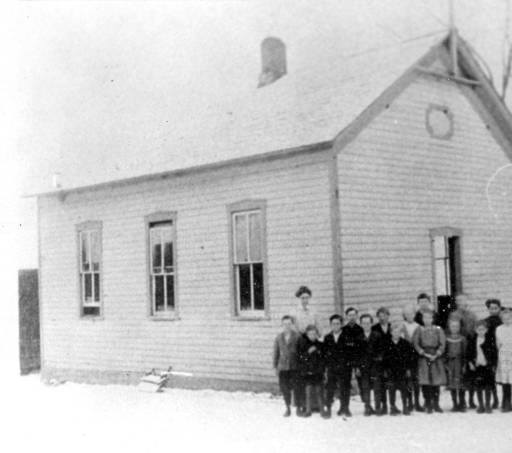
Prairie School District #44 was organized in 1865, and the first one-room schoolhouse was built in 1866 on two acres of land at the northwest corner of 63rd and Mission Road. The property was formerly owned by the Reverend Thomas Johnson, founder of the Shawnee Methodist Mission and Manual Labor School, and inherited by his son, Alexander S. Johnson. Johnson and his wife sold the land to T. A. Lewis, T. C. Porter and A. S. Johnson as District Board #44.
The school was large compared to others of its time, measuring 60 ft. long by 40 ft. wide. According to Edgar A. Porter, it was called the “Crooked School” because the building leaned slightly to the north. The building served two functions – school and church. The Westport Cumberland Presbyterian Church met here until the congregation rebuilt its church in Westport destroyed during the Civil War.
At first, the district encompassed the land from 47th Street to the present day 71st Street, State Line to Nall. In 1873, when 79 children were attending the school, the district was divided, the northern portion becoming District 92 (Shawnee Mission School). This district was later divided into the Roesland and Westwood View districts. Then in 1874, land was detached from the Corinth district and added to Prairie, making the new boundaries 59th Street to 75th Street, State Line to Nall, including a small area west of Nall. After these changes, the schoolhouse more easily accommodated the 38 children enrolled.
The school day ran from 9:00 am to 6:00 pm from Labor Day to the first of May. School was never dismissed because of bad weather. Once a year, 8th grade students had to take and pass the Common Exam if they wished to continue their education at one of the city high schools (Westport or Argentine).
In 1882, one acre of land at 67th and Mission Road was purchased from Henry Coppock, and a new one-room frame schoolhouse was built. The property at 63rd street was sold for $80.00 and services rendered to Samuel Miles Standish, the carpenter who built the school. The new one-room white building was austere in appearance with its small, narrow windows. According to Edgar Porter, the school was heated by a big red stove in the middle of the room. Half of the pupils roasted while the others shivered. Before leaving at night the pupils put their ink bottles under the stove so the ink wouldn’t freeze overnight. The school was equipped with desks, a blackboard, a bundle of switches, coal scuttle, poker and shovel, water pail and a tin dipper from which everyone drank water. The children played baseball or used the teeterboard laid across a fence rail during recess. One teacher taught all the grades and was paid $25 to $45 a month for seven months.
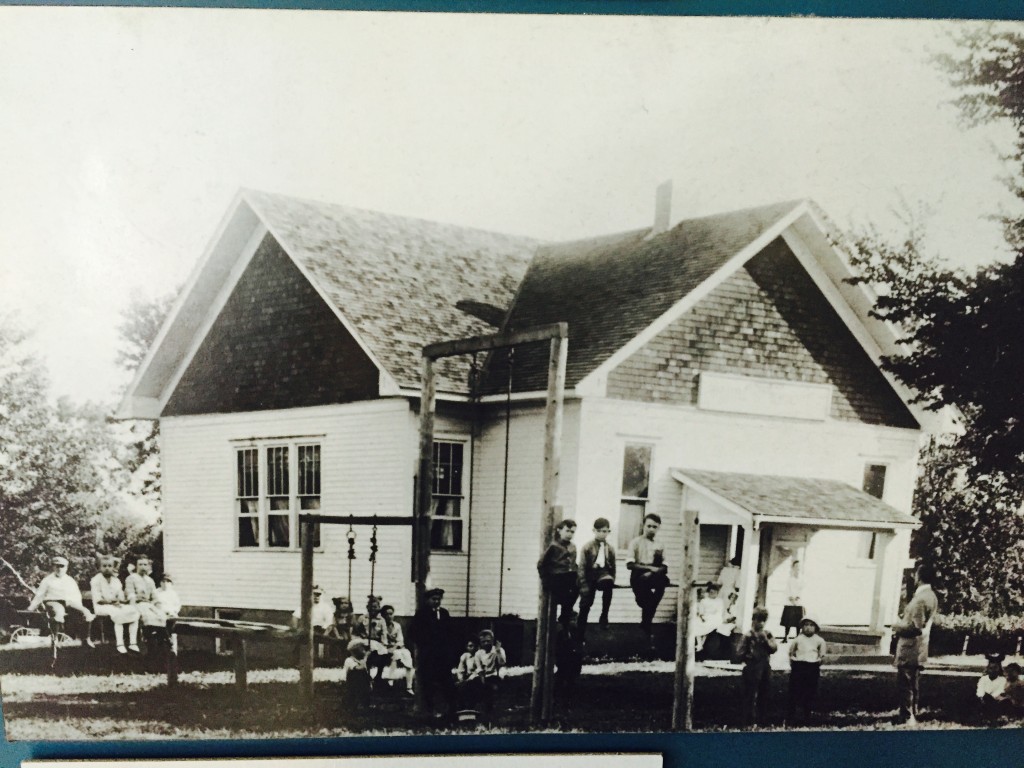
There were walnut, hickory nut and persimmon trees in the woods east of the school, and when the nuts and persimmons were ripe, many students were punished or whipped for playing hooky or being late to school while picking them. Northwest of the school about 200 yards away, a spring came up from under rocks. This spring was walled up to provide drinking water.
Students had more than “book learning.” The Coppock children remembered one teacher, Mr. Baxter, who taught the pupils how to measure off an acre of ground by stepping it off on school property. Mr. Baxter used many teaching methods. When one pupil couldn’t learn to spell “Prairie,” he had the boy stare at the word as he walked back and forth between Mission Road and the School. When that method failed, he drew a square than enclosed the boy’s feet and had him stand there until he learned the correct spelling. Another teacher, Miss Flanner, showed the children how to plant oak trees on the school grounds the last day of school.
In 1887, the school got new desks. The room was decorated with framed mottos, such as “Knowledge is Power” and “Never Give Up.” The highlight each week was the Friday night spelling contest.
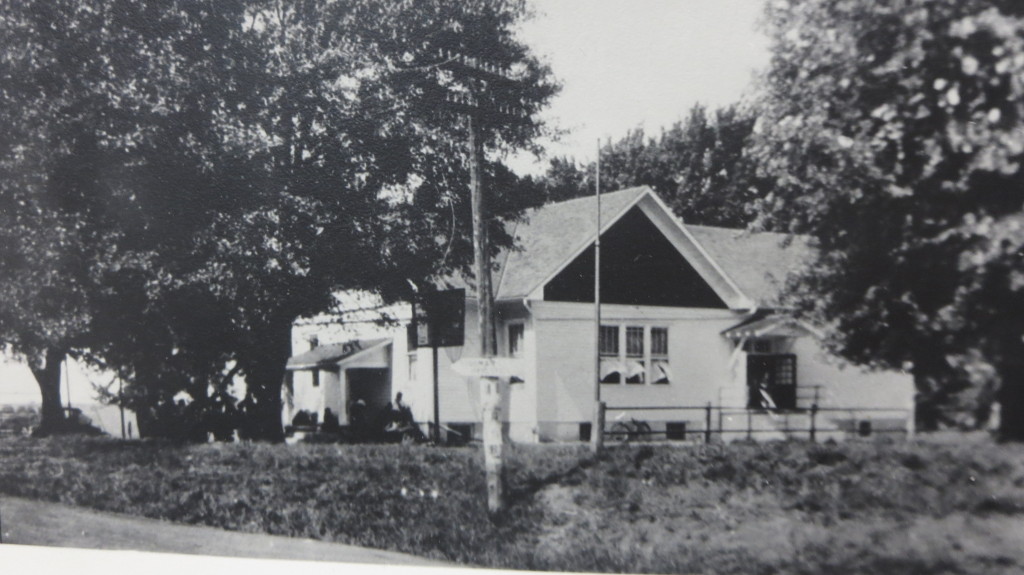
In 1912, the old schoolhouse was torn down, and a new white frame building with a front porch built. According to the Kansas City Star the building cost $2,000. The ceiling of the main room was 14 feet high and the room 37 by 28 feet. It had a front hall with cloak rooms and stairs leading down to the coal room and basement playroom. The schoolhouse was lit by gas light obtained by an acetylene generator. A simple hot air furnace reduced the annual coal bill to $30 and was installed for $100. The teacher’s desk stood on a raised platform at the north end of the room. This platform was also used as a stage for student plays, box suppers and meetings of the Literary Society. The Anti-Horsethief League (Central Protective Association) also met at the school. This group was organized by the dairy and truck farmers in the area to catch thieves stealing chickens, hogs and horses.
New playground equipment was designed and installed by the teacher, Mr. Burbridge. Students played basketball, softball and English-style football. “Shinny” was a type of field hockey played with sticks and a can, and “Annie-Over” was a team game in which the ball was thrown over the schoolhouse roof. They also played “Fox and Wolf” in the snow, “Drop the Handkerchief” and had jump rope contests. Brush Creek was conveniently located for ice skating or fishing. Traditionally, on April 1st, you went swimming even if you had to “break the ice.”
Parents built an open shed on the school grounds to house the horses rode to school. In cold weather, dogs were allowed into the schoolroom where they slept by the stove. When not in lessons, girls were busy at “fancy work,” defined as sewing aprons or needlepoint.
Boys played baseball twice a month on Friday afternoons with other schools if their lessons were caught up. On one occasion, Corinth boys showed up for a scheduled game and the Prairie teacher sent them home because her students had not finished their lessons.
In 1926 a room was added to the north of the school, and in 1931 two more rooms were added to the west of the structure. Prairie was now a four-room school, with two grades in each room. In 1931, Lloyd Dobbs became the principal of Prairie.
In the early 1930s, Mission Road was still a country lane running beside Mr. Porter’s bull pasture, and students had to shoo off cows and pigs before they could play ball in the field. Sheep were pastured in the wooded land between Cherokee Lane and Mission Road, and students used the same path and footbridge then as they do now, behind Village Church to get to school.
There were interscholastic contests in softball and season competition and tournaments in basketball and track. The Prairie “Panthers” were supported by cheerleaders and a Pep Club.
As the population grew, so did Prairie. In 1936, construction began on a new red brick Prairie School. The school, built by the WPA and designed by Keene and Simpson architects wasn’t completed until 1939. In addition to classrooms, this building had auditorium-gymnasium facilities, a book room, a cafeteria and office spaces in the front.
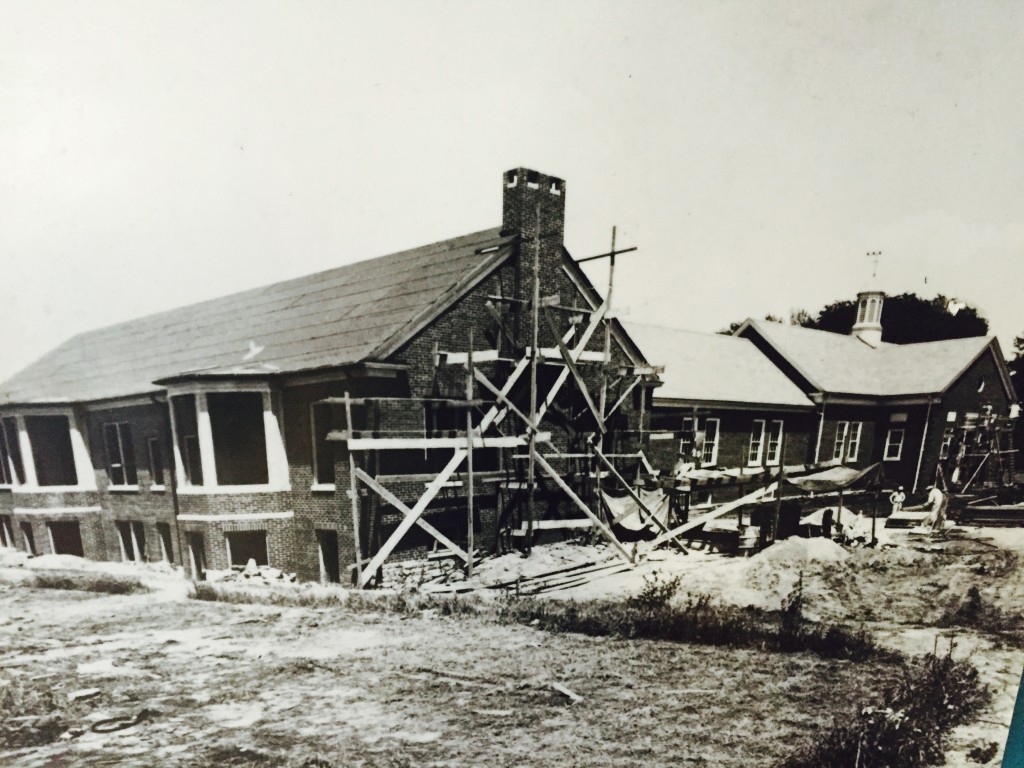
In 1937, Prairie’s first PTA was formed (although the charter was not granted until February 1938), with Mrs. R. Z. Smiley serving as President. The mothers prepared and delivered homemade school lunches to the school, and meetings were held at each mother’s home to plan events for the pre-school group, parent-teacher luncheon, parent education courses, parent-drivers for Philharmonic concerts and room mothers. The PTA also started a Prairie art collection with the purchase of a large Van Gogh print in 1937-38.
A Prairie tradition that started in 1937 was White Christmas. An evening performance of Christmas music, directed by Violette Hembling Williams, was followed by a presentation of gifts of canned food wrapped in white – students placed these packages in front of a nativity scene.
Prairie was one of the first elementary school libraries in the state of Kansas to open in 1937. Mary Oyster, a Prairie teacher, convinced the school board of the need for a central library, where books could be used by all students. She helped plan the book room for the new building, a paneled room with a fireplace and bay window. School funds were used for buying books and furnishing the room. Miss Oyster volunteered her work for two summers in setting up the library. The Prairie teachers received help from KCMO Public Library librarians in buying and cataloguing books. A part-time librarian was hired in 1944.
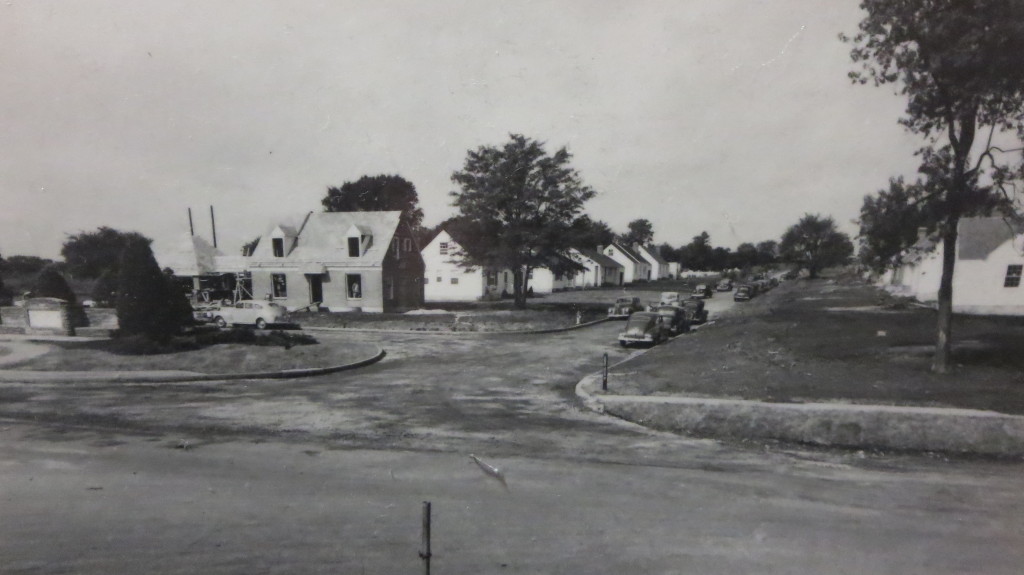
In 1938, recommended changed were implemented following a study of the school conducted by several University of Kansas professors. Maurice Cook became the principal and a teacher was assigned to each grade level. The cafeteria was reorganized and a school band orchestra program began.
The same year, Fern Bruce was appointed school nurse at Prairie, which made it the first school in Johnson County to have a nurse on duty. Mrs. Bruce served at Prairie for 18 years, and in 1967, she received the first achievement award given by the NEA (National Education Association) to the “outstanding school nurse in the United States.”
In 1941, the J.C. Nichols Company began to build a new subdivision on an 80-acre tract south of the school purchased from the Lewis family. The first platting extended from 67th to 69th Street, Mission to Delmar and the first ten homes were constructed on 69th street. The next 80 acres immediately south of the Lewis property had been purchased from four members of the Porter family. The 16 acres purchased from Elizabeth Porter is the area occupied today by the Prairie Village Shopping Center. Prairie School District #44 had been in existence for many years and this inspired the Nichols Company to name the new subdivision “Prairie Village.”
During World War II, Prairie sold defense bonds and stamps and held adult classes in civilian defense, first aid and home nursing. The PTA sold used school books and new school supplies.
In 1943, J. True McAuley became principal of Prairie and the Student Council was started by Thelma Carpenter. Student Council officers and members were elected by the upper grades and representatives were appointed by teachers from the lower classes. Each committee of Student Council had a student chairman and a faculty advisor. Awards were presented to those rooms best exemplifying standards of good citizenship. The Prairie Student Council helped other schools throughout the metropolitan area set up their councils.
The school newspaper, the Pow Wow, also began in 1943 and was published once every six weeks. The PTA discontinued its bulletin and instead assumed financial responsibility for the newspaper to support the students. Each year the secretary of Student Council served as editor of the paper and its sponsor Miss Carpenter.
Miss Carpenter and the Student Council developed a new White Christmas project, where each classroom adopted a child at Lifeline Orphans’ Home and purchased gifts of food, clothing and toys.
The 1940s were an important time for art and music activities under the direction of Violette H. Williams. Annual carnivals and operettas were given by the music department to raise money to buy pictures for the school. Students also painted a mural depicting the history of art and music, which was written up in an educational magazine.
Field Day was also a big tradition. In 1946, the day-long event included a parade with the school band, athletic events and a picnic supper on the hill for students, parents and teachers. In 1947, a softball game between 8th grade boys and their fathers was added to the list of events.
Hobo Day was also an eagerly awaited spring event. Students, teachers, the principal and custodians dressed as hobos for one day.
In 1948, construction began on an addition to the school, which would increase the building capacity from 450 to 750 pupils. A rear wing was added, housing 12 new classrooms and a visual education room.
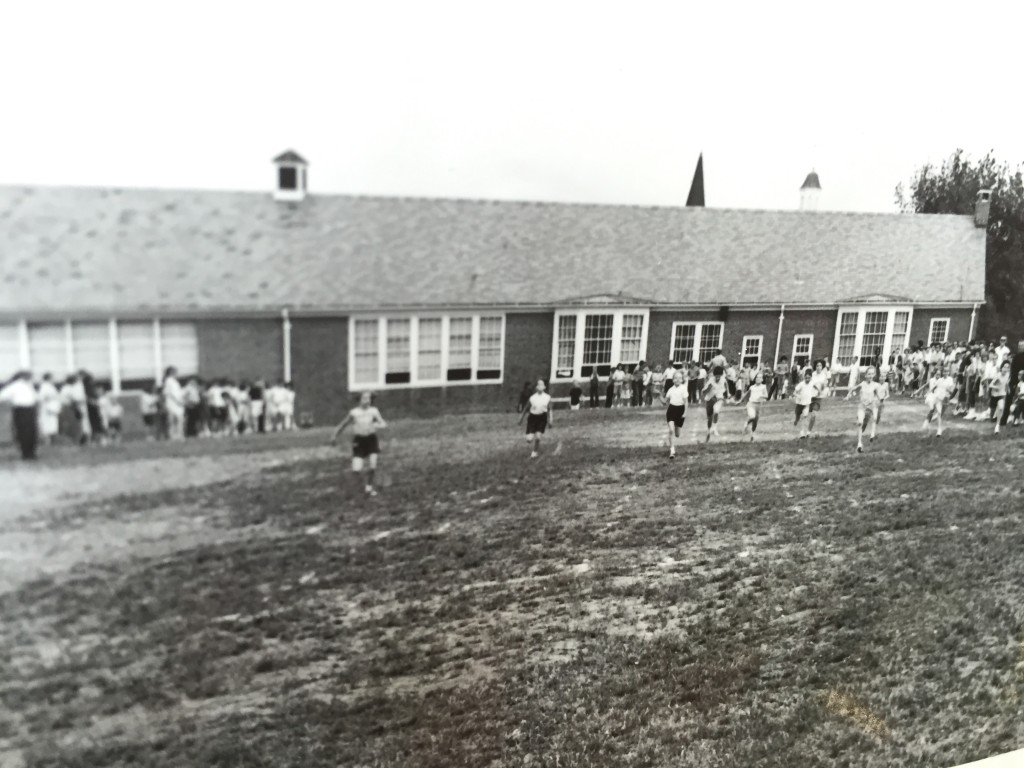
There was a new cafeteria, an open patio and the gymnasium was doubled. Voters approved a bond issue of $325,000 for this construction. In the fall of 1948, Harold C. Dent became principal, assuming responsibility for 30 teachers and an enrollment of just under 600 students.
Children assigned to the rooms on the north of the school considered themselves fortunate. About 3:00 every afternoon, the cattle pastured in the field to the north of the school came down to a big tank for water – this ritual was always fun to watch.
Within the space of two years enrollment at Prairie doubled, reaching a total of 1200 students in 1950. Mary Oyster was Vice-Principal in charge of primary education; Norman Babcock was Vice-Principal for the upper grades. The school board frantically started building new schools, and Mr. Dent officially became superintendent of Prairie District in October of 1951. Norman Babcock became Prairie’s Principal, and Porter School opened in with Mary Oyster as Principal (kindergarten – 3rd grade only). Highlands started in 1952 with Charles Malone as principal, and Belinder opened in February 1953 with Paul Gooch as principal.
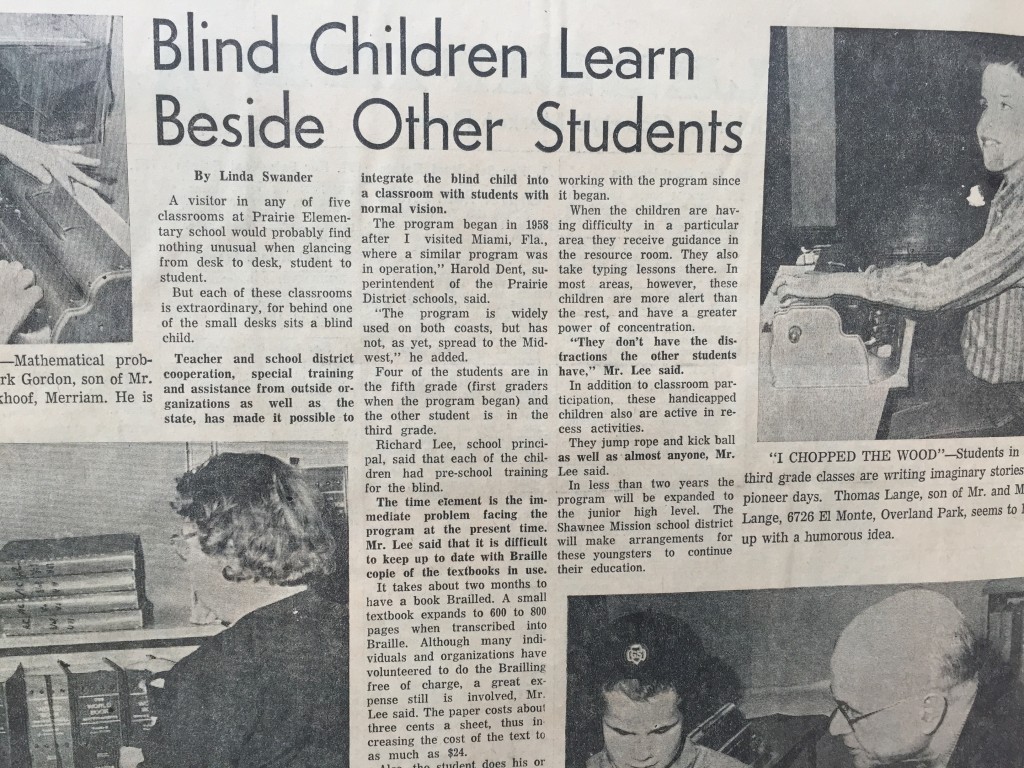
Fundraising at Prairie took off in the 1950’s. The school carnival netted $1,200, and the annual paper sales brought in $2,000. In 1951, the faculty 8th grade Basket Brawl, earned $1,000.
During 1951, the Johnson County Library was conceived and planned by members of the Prairie Library Committee under the leadership of Mrs. Mark Robeson. Spearheading a community effort, the committee worked the next three years to see the library materialize in 1955.
The 1953 basketball team, coached by Leroy Higgins, ended its season with an outstanding record – 18 straight victories in a row. Starting with three victories the preceding March, they went through the season winning nine regular season games and the Turner and Shawnee Mission tournaments.
In addition to the athletic program, Prairie students enjoyed other school activities. Each year the students participated in a school play. The 8th graders chose a king and queen to preside over the annual Valentine Dance. Graduation exercises were followed by a program dance held in the gymnasium.
In 1955, all 7th and 8th grade students left Prairie for the new Indian Hills Junior High School. Norman Babcock became the first principal at Indian Hills, and several upper grade teachers left Prairie to staff the new school. Charles F. Malone took over as principal of Prairie, and the school re-oriented as a kindergarten through 6th grade institution.
In 1956, Mrs. Mildred Ross started teaching a Special Education class at Prairie, and two years later five blind children were integrated into four first grade rooms at Prairie – the result of a program designed by the Prairie District. This was the first area program in Kansas for blind children. Mrs. Helen Howe, resource teacher, instructed them in Braille and worked with their teachers to plan individual study programs at Prairie.
Foreign language in the form of conversational Spanish was added to the curriculum in 1959. An exchange teacher from Peru taught Spanish to the 6th grade.
The class size maintained by the Prairie District was considered excellent by national standards. In the fall of 1961, Prairie had 828 students, with an average classroom load of 24 pupils per homeroom teacher.
In 1957, Mrs. Margaret Knott’s music classes wrote, “Prairie, Prairie, Prairie.” The school was the filming site of a national safety movie used to orient safety patrol groups. A book festival was also held during this year, at which two prominent authors attended – Marguerite Henry and Phoebe Erickson, winners of the William Allen White Award. The first Prairie yearbook, Prairie Panther Prints, was published in 1961.
From 1962-1969, new scholastic programs were started. These programs included “new math,” the Greater Cleveland Social Studies Program, a new science curriculum based on the discovery approach to learning; the Initial Teaching Alphabet (ITA) reading program for Kindergarten through 2nd grade; and new curriculum in social studies and spelling. The foreign language program expanded to include French. New teaching innovations included inter-class grouping and team teaching. A school psychologist, media specialist, instructional secretaries, teachers’ aides and playground supervisors were added to the staff. In 1962, Robert W. Lee took over as principal at Prairie, followed by James Owens in 1964.
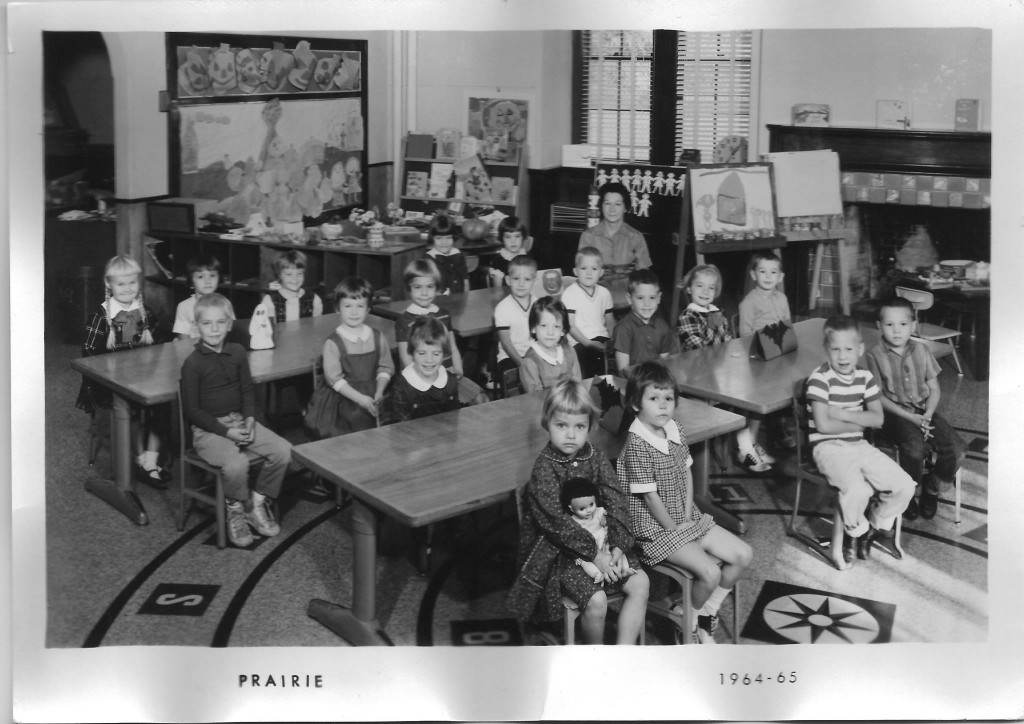
Great changes came to the Prairie library. In 1964, the library moved into its new quarters, which was carpeted, air-conditioned and restocked with 11,400 volumes of transparencies, records, resource material, etc. This new library center was designed by Mrs. Jean Moore, school librarian since 1950. Prairie School was in part responsible for two District Encyclopedia Britannica Awards: one for 3rd Place in 1964 and the other a Special Commendation Award in 1966.
The Prairie School District was the first district in the United States to receive top recognition twice by the Encyclopedia Britannica and the American Association of School Librarians, co-sponsors of the awards.
Prairie was one of the first two elementary school libraries in Kansas developed as a demonstration library. It was selected because it had an extremely high level materials collection, professional competency of library staff, evidence of outstanding community cooperation and support and evidence of involvement in planning by the entire staff.
In 1969, Prairie was one of nine libraries surveyed by the Department of Health, Education and Welfare and determined to have a “superior media program.” Over 5,000 educators from the United States and several foreign countries visited the library. In June 1968, over 450 members of the American Library Association toured the library and observed 50 students and staff members demonstrate the use of media in the curriculum.
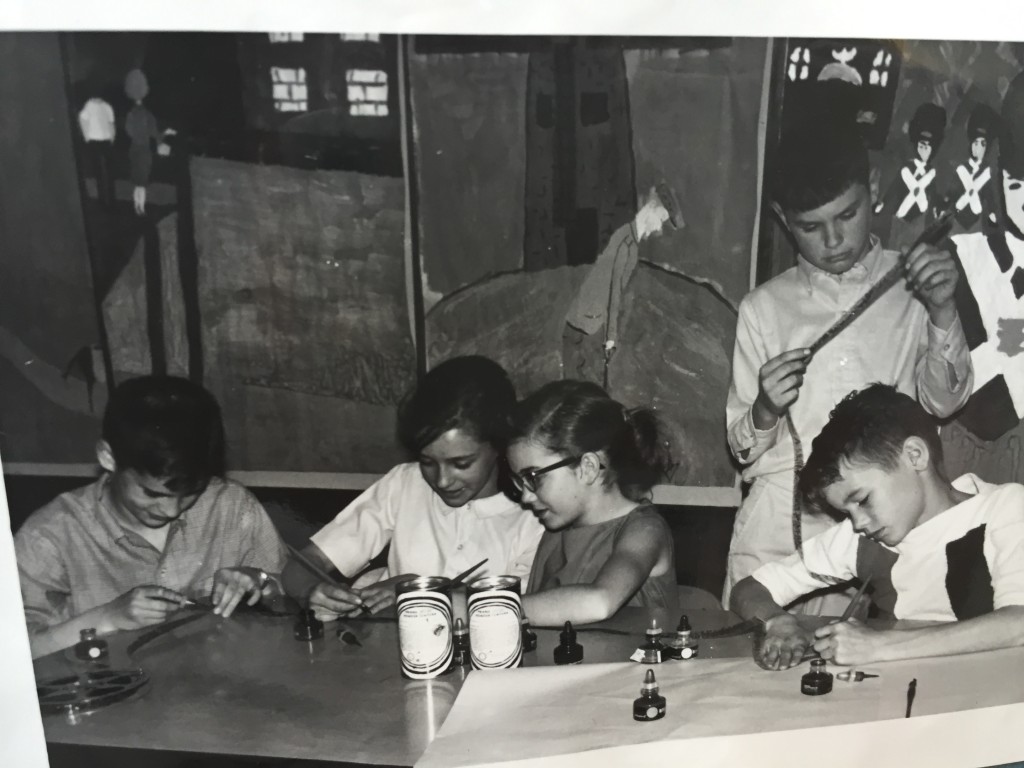
On July 1, 1969, Prairie School District #44 was officially dissolved, and Prairie School became one of 65 schools in the new Shawnee Mission Unified School District #512. This new district contained 45,422 students, kindergarten through 12th grade, in September 1969. Dr. Arzell Ball was superintendent of the new district.
Wayne Morris took over as principal for the first year of unification. Foreign language was dropped from the curriculum. With a high student-teacher ratio, volunteer help was of prime concern to the PTA. Mothers assisted in the library media center, in the classrooms and supervision on the playground. The Picture Lady Program, started in 1968-69, continued with volunteers giving illustrated talks in the classrooms about art and artists.
For several years, Prairie students participated in exchange days with African American students attending the Mary Harmon Weeks School in Kansas City. In 1970, Miss Donna Knoell taught a vocational arts pilot program in her 5th grade room. Her curriculum included stitchery, cooking and wood-working.
History took on a new meaning at Prairie as the “Heritage Wall Collection,” framed pictures of Prairie students and the school, was mounted for display as a permanent exhibit in 1970.
American Bicentennial celebrations and projects occupied Prairie students and teachers in 1974. Congressman Larry Winn, Jr., presented the school with a flag that had flown over the Nation’s Capitol. Cafeteria employees dressed in costume once a month to serve “American Heritage” meals; the first lunch was a New England Cape Cod style menu featuring fish, maize and Powhattan potatoes. The Prairie Campfire girls painted a likeness of principal Wayne Morris on the school fire hydrant as part of a country-wide bicentennial project. Kansas Governor Robert Bennet visited the school and spoke on the Declaration of Independence. Afterwards, he sent a seal of the State of Kansas to the school.
In February 1974, Jeanne Tapp worked to put together the Prairie School Heritage Room, displaying materials recording the history of the school. Included was a scrapbook complied for J.C. Nichols recording the founding and growth of the Plaza and Country Club district. Special displays featured the Johnson and Wornall families, the Porter family and Henry Coppock.
This room featured a book collection which included popular children’s literature from the early 1900s and textbooks on geography and arithmetic from 1866-1960s.
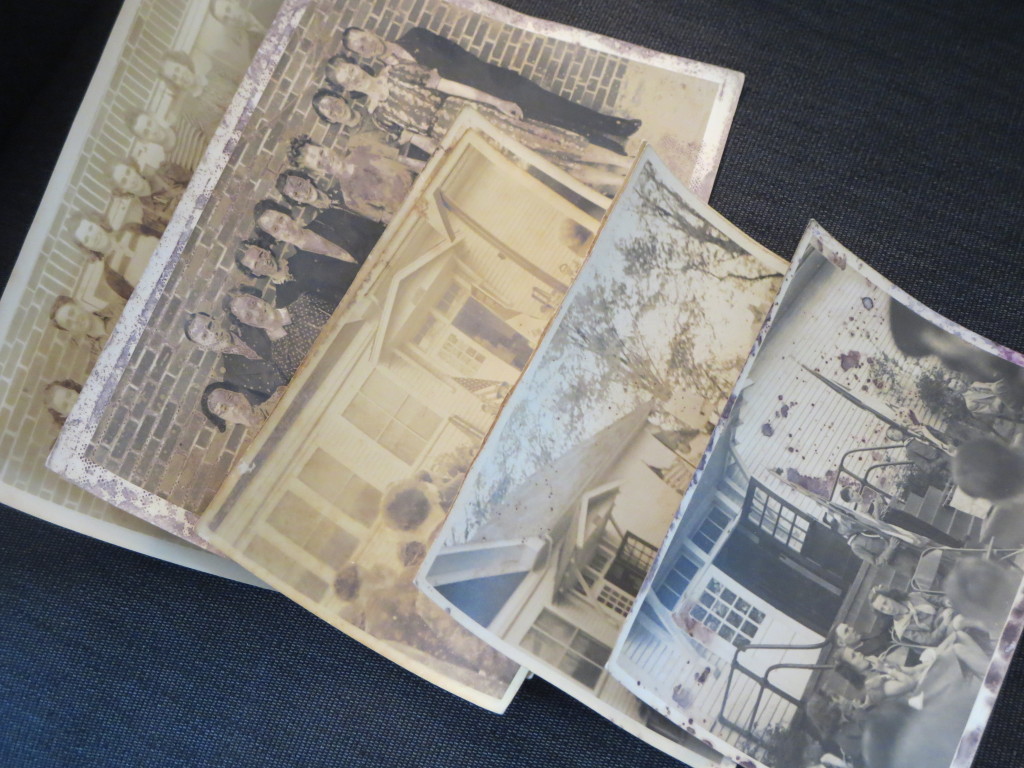
Also on display was a dress from the 1890s loaned to Prairie by the Kansas City Museum, as well as a cavalry uniform and McClellan saddle used during the Indian War. The Heritage Room was decorated with oak and walnut school tables refinished by the committee members. This project was funded by PTA members, and materials displayed were collected by Mrs. Jean Moore, former librarian, Mrs. Bruce Baker, Mrs. Alfred Biggs, Mrs. William McCrary, Jr., Mrs. Claude Kenyan, and Mrs. Kenneth Tapp, Jr.
In 1976, the Heritage Room opened to the public, as a part of Prairie’s Curriculum Fair.
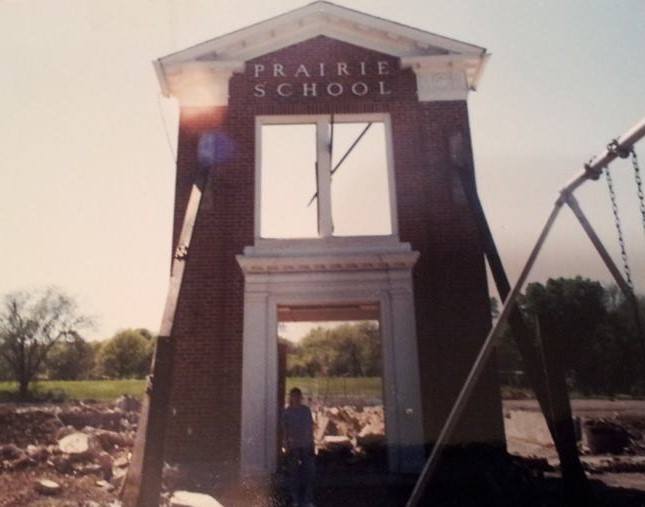
On the evening of July 28, 1990, heavy storms moved through Prairie Village and lightning struck the northwest corner of Prairie at roughly 8:00 p.m. The fire spread quickly and blazed uncontrollably until fire departments got it under control around 5:45 a.m. More than 50 firefighters fought the blaze.
The fire caused extensive damage less than a month before classes were scheduled to begin.
Large sections of the school were destroyed, but no injuries were reported. The library and some classrooms were the only areas saved from the fire.
Gary Lamons, fire prevention officer for the district, said because of the building’s age (built in 1936) it fell under codes that were written long before sprinkler systems became common, making it extremely vulnerable in a fire. The district worked feverishly to figure out where to place the 500 Prairie students scheduled to return to school in the fall. The Old Mission Junior High School in Roeland Park became a temporary home for these students while the site was excavated and rebuilding began. Linaweaver Construction, Inc. razed Prairie’s remaining structure but left the East entrance, which currently serves as an entryway to the courtyard of the current school.
In an effort to raise funds for the new building, Prairie planned a special event open the 1939 Time Capsule that was buried at the cornerstone of the building. This event was held on May 4th, 1991. Bricks that were salvaged from the original structure were decorated with a hand-stenciled logo donated by a local artist, Vicki Tramposh – slate from the room was also stenciled and sold. Prints of a pen and ink drawing of Prairie School were done by local artist, Gil Rumsey, and sold as well.
Inside the copper Time Capsule were class pictures, news clippings and remarks from Superintendent, Beth Moore, “May your district and Prairie School be as firm and lasting as the cornerstone which we are tonight laying.”
More than $37,000 was collected at the May 4th event, and an anonymous donor pledged an additional $10,000. 1,000 people showed up to be a part of the event.
The Shawnee Mission School District dedicated $5.2 million toward rebuilding, and the additional funds raised went toward a traditional wood gymnasium floor – a staple of the old school.
Amidst the loss that accompanied the fire, Prairie hit a high note and was chosen as an “Award of Excellence” winner by the Kansas PTA. Gloria Barnhart, KS PTA President stated, “The innovative, creative projects and volunteer programs are commendable. By working together and uniting for the success of all children, Prairie PTA is truly making a difference in the school and community.” “The open communication, support and parental involvement at Prairie are positive results of the PTA’s efforts and leadership. This is an example of PTA work at its best.”
To qualify for an award, a school PTA must demonstrate clearly-defined goals, sponsor programs that encourage parent involvement, advocate for children, link with state and national PTA, communicate effectively, work with the school and community and strive to be inclusive.
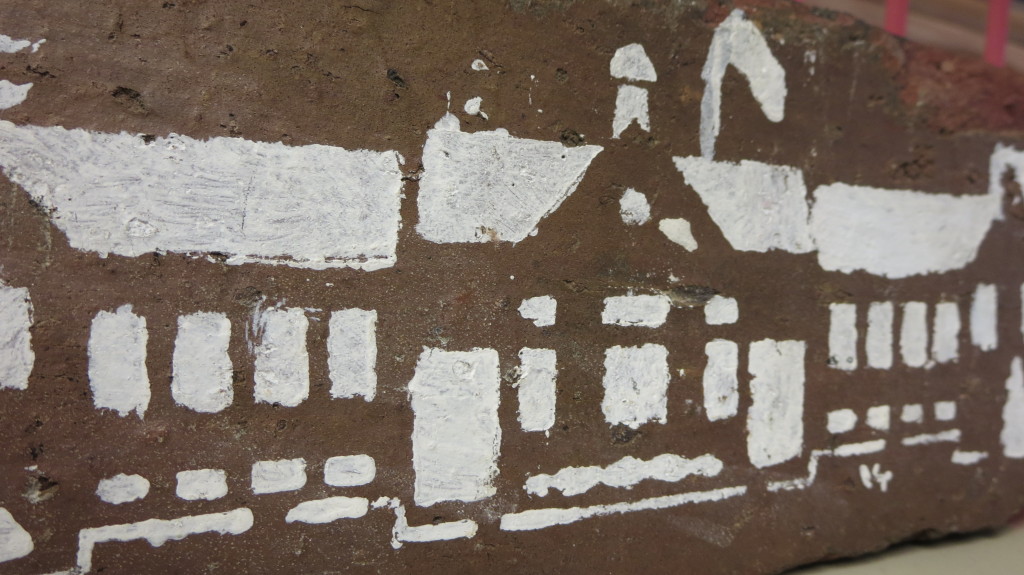
After the 1990 fire, members of PTA declared a history project should be taken on, since the new building would offer no visual representation of Prairie’s rich history.
The grant application was written by Prairie and its PTA. A committee was generated consisting of a team of professional and volunteer researchers who worked to compile artifacts and school timeline info. Cynthia A. Robinson headed up this Heritage Committee and led the charge to gather historical donations and coordinated former student and staff interviews. This research process took three years to complete and the finished timeline opened to the public on May 4th, 1994.
Prairie’s new building was dedicated Sunday, September 26, 1993. The theme, “Building on tradition,” was appropriate as it reflected Prairie’s history, more than a century old. The dedication program included video presentations, musical performances by Prairie students and remarks by Shawnee Mission Superintendent, Marjorie Kaplan, School Board President, Nancy Gebhardt and Principal, Joy Torgerson.
Research conducted by Mrs. Jeanne Tapp, May 1972 (sources cited here).